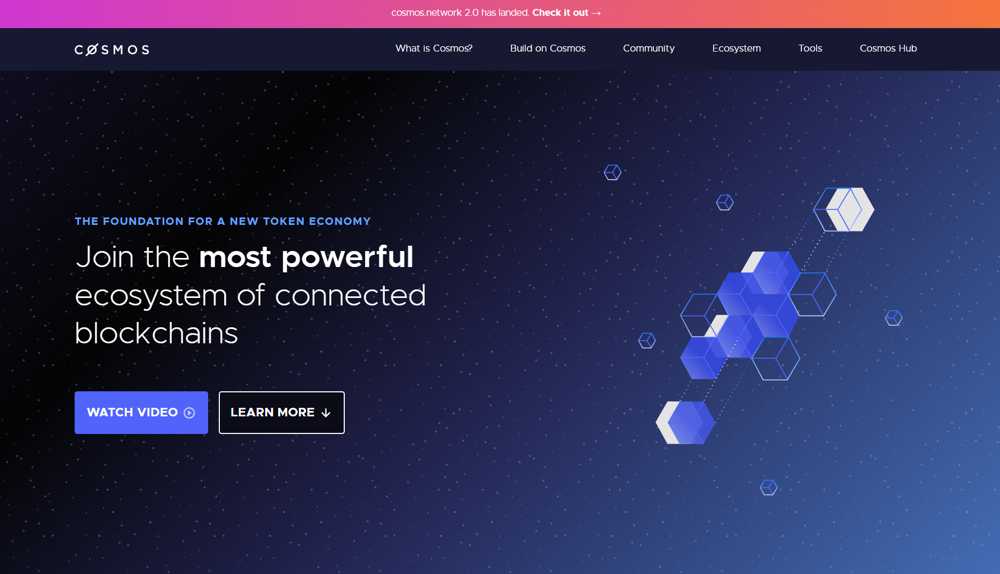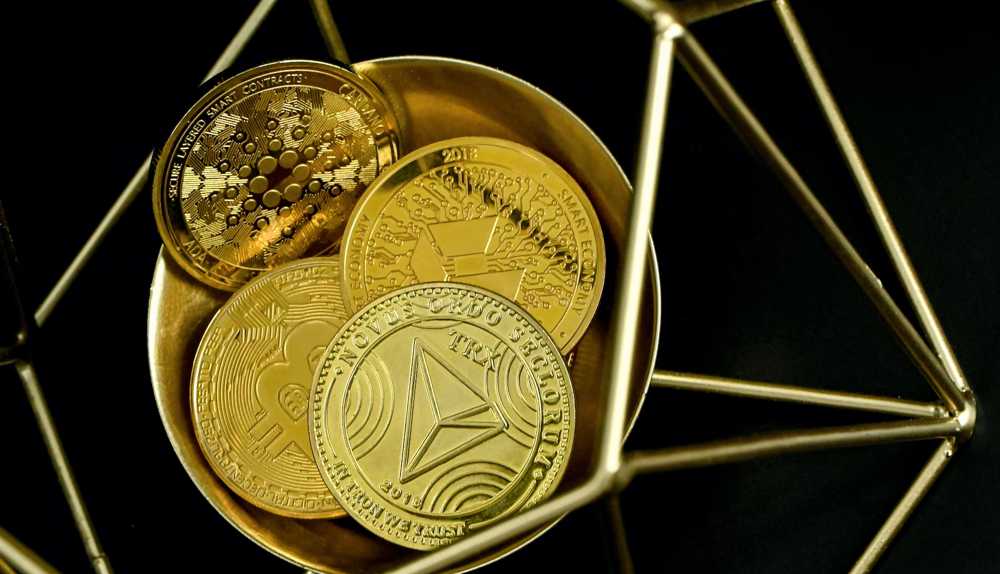What Is ATOM Cryptocurrency
Cosmos is a new blockchain-based platform that aims to improve interoperability between different blockchains. It allows users to launch their own cryptocurrency and participate in the Cosmos ecosystem without having to run their own node or trust other nodes.
Cosmos’ main goal is to allow people from all over the world access to high-quality services, regardless of whether they have access to affordable crypto resources or not.
What is atom cryptocurrency?
ATOM is a security token built on the Ethereum blockchain. It’s actually a fork of the ERC20 token standard, but with some notable differences:
- The tokens are fungible — they can be exchanged between users without any loss in value. This means that you don’t have to worry about losing money if someone else buys your token and then sells it before you need it back again.
- Each atom is uniquely identifiable by its ID number (which is derived from the time of creation). This helps ensure that there are no duplicate accounts or identities floating around the system which could cause problems later on down the road when users come looking for their missing funds
Cosmos Platform History

The Cosmos Network was created by the Tendermint team, an open-source project led by Jae Kwon. Tendermint is a blockchain consensus engine that uses proof of stake to reach consensus on the network.
Originally developed for the Cosmos Network and now used by many other blockchains including Ethereum and Bitcoin, it has been used in production environments since 2017.
Cosmos Network is a blockchain network built on Tendermint and IPFS. It uses the Inter-Planetary File System (IPFS) to store blocks of data across a distributed network of computers, making it more resistant to hacking attacks.
Cosmos Can Improve Blockchain Interoperability
The major problem with blockchain is interoperability. But, Cosmos can improve blockchain interoperability.
Cosmos is a platform that can improve blockchain interoperability by providing a decentralized network of independent blockchains and hubs. Cosmos can also help with scalability, as it will be able to handle thousands of transactions per second while maintaining decentralization and security. Cosmos is a network of hubs that communicate with each other through the use of smart contracts and data privacy protocols like zk-SNARKs (zero-knowledge proof).
How Cosmos Manages Scalability
Cosmos is a scalable, decentralized and trustless network. Atom is a fork of the Tendermint blockchain protocol. The main difference between Cosmos and other blockchains is that it uses a consensus algorithm called Tendermint as opposed to Proof-of-Work (PoW).
Tendermint is an advanced Byzantine Fault Tolerant (BFT) consensus algorithm that ensures no single party can attack or manipulate the network. This means that even if one person tries to gain control over your money by attacking another user’s funds on their sidechain, they won’t be able to take advantage of this weakness because there are multiple validating nodes running on top of each other in parallel across different chains within the same universe—without being able to coordinate with each other directly.*
What is Tendermint?
Tendermint is a blockchain consensus engine. It is a Byzantine Fault Tolerant (BFT) replicated state machine that can be used to create Proof of Stake blockchains.
Atom uses the Delegated Proof of Stake (DPoS) algorithm, which allows for secure and decentralized network governance without requiring expensive mining hardware or electricity costs, making it suitable for smaller teams who want to build their projects on top of Atom’s blockchain.
The network is built on top of a software stack that allows users and developers to easily build their own applications. The Atom blockchain provides an API gateway service and features an integrated development environment (IDE) for building smart contracts, which are the basis of any decentralized application (dApp).
How Does Tendermint Work?
Tendermint is a consensus algorithm that relies on the Byzantine Generals’ Problem. It is a Proof-of-Stake (PoS) consensus algorithm, which means it uses a PoS model to achieve consensus.
The Byzantine Generals’ Problem refers to an issue when there are multiple parties involved in a transaction and they have conflicting interests or goals. For example, one group may want more money than the other because their profit margin is higher; another group wants less money than they did before because they lost some of their capital during bad times; etcetera…
The Byzantine Generals’ Problem is a problem with the consensus that was first published in 1982. It describes how to achieve consensus in a distributed system when there are conflicting interests or goals between different parties involved.
What is Cosmos SDK?

Cosmos SDK is a blockchain-based platform that allows users to build decentralized applications on the blockchain. The Cosmos SDK has been designed to make it easier for developers to develop their own DApps using the Tendermint consensus protocol.
Cosmos SDK provides developers with tools, libraries, and APIs that they can use in order to build their applications on top of any number of blockchains.
The Cosmos SDK is written in Python and JavaScript. It consists of a command-line interface (CLI), a web app, and a set of libraries that can be used in any project.
What is Inter-Blockchain Communication Protocol (IBC)?
Inter-Blockchain Communication Protocol (IBC) is a protocol for inter-blockchain communication. It enables blockchains to exchange assets, tokens, and coins. The aim of IBC is to enable the scalability of blockchain networks as it allows for quick payments between different blockchains without having to wait for blocks to be mined or confirmations on the receiving end.
The IBC protocol is based on a blockchain-agnostic approach. This means that it can be used by any blockchain, regardless of its consensus mechanism or underlying technology. It also ensures interoperability between blockchains and other digital ledger technologies (DLTs) such as Distributed Ledger Technology (DLT), Hashgraph, etc.
What is The Usability and Sovereignty of Blockchains?

There are two main usability challenges that blockchains face: smart contracts and usability.
Smart contracts are computer programs that facilitate the exchange of value between two parties. They’re written in programming language and run on computers, which means they can be hacked or manipulated by someone who gains control over them—which is why most people don’t want their data stored on a blockchain unless they have full control over it.
Uselessness is another major challenge for blockchains today, particularly when it comes to businesses seeking out new opportunities for growth through the use of blockchain technology (which makes sense since businesses are always looking for ways to improve efficiency). Uselessness refers specifically here not only as being useless but also having no purpose whatsoever; some would argue this problem extends even further than just being useless itself but instead having no purpose at all beyond merely existing within its current system without contributing anything meaningful towards improving said system itself either way.”
As a result, the type of blockchain that most people are looking for today is one that can be used by businesses in order to improve their operations. Some examples of this include supply chain management and food safety tracking systems as well as healthcare records.
How Do Hubs Operate?
Hubs are the central component of the Cosmos network. They’re run by validators, who are responsible for maintaining the network and helping it to grow. Validators may be individuals or groups, though most will be run by individuals (as they can’t be held accountable for what happens if there are problems).
Validators are rewarded for their work in different ways: some receive tokens that they can trade on exchanges; others receive cash payments, and still, others receive both kinds of rewards.
Every transaction in the Cosmos network requires a fee, which is paid to validators. Validators earn this fee by maintaining their own chain-state database and allowing other users to perform operations on them (such as creating new blocks).
How Do ABCI and Cosmos SDK Work Together?
ABCI is a specification that allows developers to write applications that interact with blockchains. ABCI is language-agnostic, meaning that it can be used by anyone who is familiar with any programming language. This makes it possible for developers to use the SDK in their own projects and not have to worry about how they’re going to implement their project on top of an existing blockchain platform (like Cosmos).
In order to use this open standard, you’ll need one thing: A Cosmos SDK token! The Cosmos SDK Token provides access rights for users who want access not only without having any knowledge about crypto but also without having any technical background whatsoever!
The Cosmos SDK Token is the fuel that powers applications built on top of the Cosmos ecosystem. It allows developers to interact with blockchains, create their own tokens, and build projects without having to worry about the underlying technology.
IBC and Peg Zones
In this section, we’ll get into the specifics of how IBC works.
IBC is the Inter-Blockchain Communication Protocol that allows for communication between blockchains. It uses a similar model to how Bitcoin’s lightning network works: it allows for instant transactions across any number of chains and networks through the use of smart contracts. This makes it possible for multiple blockchains (or even token projects) to interact with each other in real-time—and at lightning speeds!
Peg Zones are computers connected to Cosmos Hubs which act as bridges between these different networks and allow them all access when needed through an atomic swap process called “auto-swapping.”
IBC makes it possible for a blockchain project to launch its own Hub, which it can then use to connect with the Cosmos Network. This means that many different blockchains can be connected together and interact with each other using this protocol. For example, let’s say you’re working on your own blockchain project and want to integrate with another one (like Ethereum).
What Is ATOM Cryptocurrency
ATOM is a cryptocurrency that powers the Cosmos Network. It was created to be the native token of the Cosmos Network, which aims to create a new type of decentralized network that will allow users to connect with each other and interact with their data in an effective way.
ATOM is a utility token that allows you to interact with the Cosmos Network through its various services such as:
- Accessing your favorite content (e.g., movies) on multiple devices at once without having to worry about bandwidth limitations or unstable internet connections
- Participating in discussions about topics relevant to us all (e.g., politics)
Conclusion
In conclusion, atom cryptocurrency is an open-source project. It has been developed by a team of experts with years of experience in software engineering and blockchain technology. Cosmos SDK provides users with a solution that enables them to build their own decentralized applications on top of the Cosmos platform through its SDK. This helps developers make apps that can be accessed by other users without having to wait for transactions to be confirmed on other blockchains.




